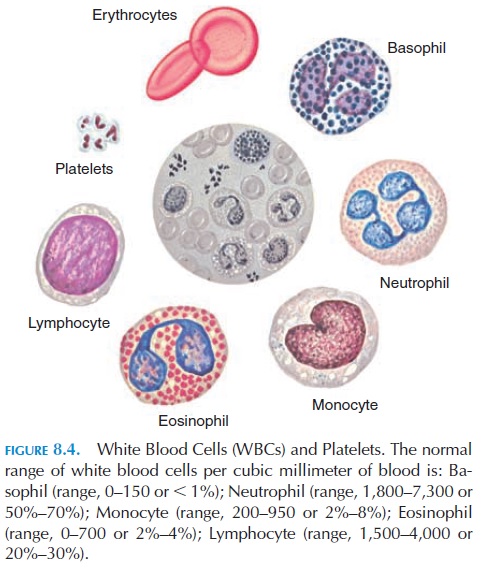Chapter: The Massage Connection ANATOMY AND PHYSIOLOGY : Cardiovascular System
Platelets
PLATELETS
Platelets (Figure 8.4), also referred to as thrombocytes, are the smallest of cells in the blood and appear as dust particles under the microscope. Al-though small in size, they contain granules in the cytoplasm. Platelets are formed by large cells, calledmegakaryocytes, located in the bone marrow andare actually pinched off bits of cytoplasm from the megakaryocytes. Platelet formation is stimulated by the hormone thrombopoietin. The life span of platelets is about 5 to 9 days.

The major platelet function is to prevent blood loss. The platelets are sticky and collect at sites of in-jury inside blood vessels—platelet aggregation. The platelets then form a plug at the injury site and pre-vent blood loss. They secrete the contents of the gran-ules at the injury site. Some of the platelet secretions are important in clot formation. The cytoplasm con-tains actin and myosin, the contractile proteins found in muscle. These proteins contract and help to pull the injured edges of the blood vessel together af-ter the site of injury has been plugged in a process called clot retraction.
Related Topics